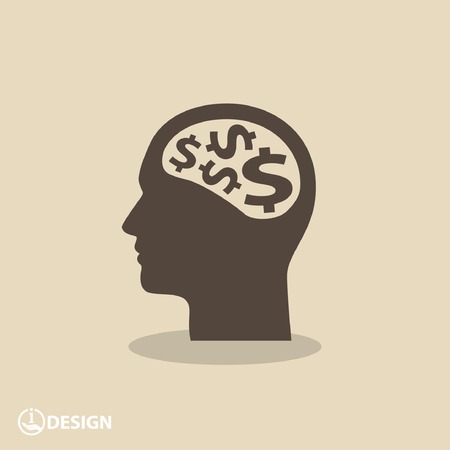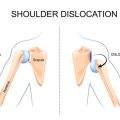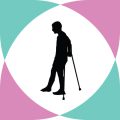1. Understanding Cognitive Aging in America
What Is Cognitive Aging?
Cognitive aging refers to the natural changes in thinking and memory that occur as people get older. This process is different for everyone, but it often involves changes in how quickly we process information, remember details, or pay attention to tasks. In the United States, these changes are a common part of aging, but they can affect each person differently based on their lifestyle, health, and cultural background.
Common Causes of Memory and Attention Deficits
There are several reasons why older adults may experience problems with memory and attention. Some of the most common causes include:
- Normal aging: Natural brain changes can slow down processing speed or make recalling information harder.
- Chronic health conditions: Conditions like diabetes, high blood pressure, and heart disease can impact brain function.
- Medications: Some prescriptions or over-the-counter drugs can cause side effects that affect memory or focus.
- Mental health: Depression, anxiety, and stress can interfere with attention and memory skills.
- Lifestyle factors: Lack of physical activity, poor diet, and limited social interaction can also play a role.
Prevalence Among American Seniors
The number of older adults experiencing cognitive issues is growing as the American population ages. According to recent studies, about 11% of people age 65 and older have some form of cognitive impairment. Memory lapses and trouble focusing are among the most reported concerns in this group.
| Age Group | % Reporting Memory/Attention Issues |
|---|---|
| 65-74 years | 7% |
| 75-84 years | 13% |
| 85+ years | 20% |
The Impact on Daily Life
Cognitive changes can make daily activities more challenging. Older Americans may find it difficult to manage medications, handle finances, keep appointments, or stay engaged with friends and family. These challenges can lead to frustration and loss of independence if not addressed early.
Cultural Considerations in the U.S.
The experience of cognitive aging is also shaped by culture. In America’s diverse society, attitudes toward aging and memory loss differ among ethnic groups. For example, some families place a strong value on caring for elders at home, while others may rely on community resources or senior living facilities. Understanding these cultural perspectives helps healthcare providers deliver respectful and effective care tailored to each individual’s needs.
Principles of Cognitive Rehabilitation
Understanding Cognitive Rehabilitation
Cognitive rehabilitation is a specialized approach that helps older adults strengthen their memory and attention skills. It uses practical strategies and structured activities, all based on research, to help people function better in everyday life. Cognitive rehabilitation can be done one-on-one or in groups, and it often involves family members or caregivers as well.
Theoretical Foundations
The main idea behind cognitive rehabilitation is neuroplasticity—the brain’s ability to adapt and form new connections. Even as we age, our brains can learn new patterns and build resilience with the right exercises. Therapists use different models, such as the restorative approach (which aims to improve specific skills) and the compensatory approach (which teaches ways to work around challenges).
Restorative vs. Compensatory Approaches
| Approach | Goal | Example Techniques |
|---|---|---|
| Restorative | Restore lost or weakened cognitive abilities | Memory drills, brain games, attention exercises |
| Compensatory | Develop ways to bypass or minimize deficits | Using planners, reminder apps, sticky notes |
Evidence-Based Techniques for Memory and Attention
Cognitive rehabilitation combines several proven techniques tailored to each person’s needs. Here are some common methods used to enhance memory and attention:
- Spaced Retrieval: Practicing information recall at increasing time intervals. This is helpful for remembering names, medication times, or appointments.
- Errorless Learning: Setting up situations so mistakes are minimized during learning, making it easier for the brain to remember correct information.
- Attention Process Training: Practicing tasks that require focus, like sorting cards by color or responding to specific sounds.
- Environmental Modifications: Reducing distractions at home (like turning off the TV during conversations) to help with focus.
- External Memory Aids: Using calendars, alarms, or smartphone reminders to keep track of daily tasks.
- Psychoeducation: Teaching individuals and families about how memory and attention work, and how they can support improvement at home.
The Role of Personalized Plans
No two people have exactly the same needs. Cognitive rehabilitation is most effective when therapists create personalized plans that consider someone’s strengths, challenges, lifestyle, and cultural background. This individualized approach helps older adults stay engaged, motivated, and successful in reaching their goals.

3. Assessment and Goal Setting
Understanding the Importance of Assessment
When supporting older adults with cognitive rehabilitation, especially for memory and attention challenges, the first step is a thorough assessment. In the U.S., healthcare professionals use standardized assessments to understand each persons strengths and areas that need support. These tools help create a clear picture of how cognitive issues impact daily life.
Common Standardized Assessments in the U.S.
| Assessment Tool | Focus Area | Description |
|---|---|---|
| MoCA (Montreal Cognitive Assessment) | Memory, Attention, Executive Function | A quick screening tool often used to detect mild cognitive impairment. |
| MMSE (Mini-Mental State Examination) | General Cognitive Function | Widely used to assess overall cognitive abilities and track changes over time. |
| SLUMS (Saint Louis University Mental Status Exam) | Cognitive Domains including Memory | Offers more sensitivity for identifying early dementia in older adults. |
Individualized Goal Planning
After assessment, it’s important to set goals that match the individual’s needs, preferences, and daily routines. In American practice, this is called person-centered or individualized care planning. Goals should be specific, realistic, and meaningful to the person. For example:
- Short-term goal: Remembering names of close family members during conversations.
- Long-term goal: Successfully managing medication schedules independently.
Steps for Goal Setting
- Identify priorities: What matters most to the individual and their family?
- Set measurable objectives: Goals should be clear so progress can be tracked.
- Create an action plan: Outline practical steps and strategies to reach each goal.
The Role of Interdisciplinary Teams
Cognitive rehabilitation in the U.S. often involves a team approach. This means working with a group of professionals such as occupational therapists, speech-language pathologists, neuropsychologists, social workers, and physicians. Collaboration ensures that all aspects of a person’s health and well-being are considered when designing their rehabilitation plan.
Example of Interdisciplinary Collaboration
| Team Member | Main Role in Cognitive Rehabilitation |
|---|---|
| Occupational Therapist (OT) | Helps adapt daily activities and environments to support memory and attention. |
| Speech-Language Pathologist (SLP) | Addresses language-based memory strategies and attention skills. |
| Neuropsychologist | Conducts detailed cognitive assessments and tracks progress over time. |
| Nurse/Physician | Monitors overall health and manages medical factors affecting cognition. |
This collaborative process aligns with best practices across U.S. healthcare systems, helping ensure that cognitive rehabilitation plans are both comprehensive and tailored to each aging adults unique needs.
4. Intervention Strategies and Activities
Practical Cognitive Rehabilitation Methods
Helping older adults improve memory and attention often involves simple, practical strategies that can be easily adopted in daily life. Therapists and caregivers in the United States use a combination of structured exercises, real-life practice, and technology to make rehabilitation both effective and engaging. Here are some common approaches:
- Memory Journals: Encourage writing down important events, appointments, or names to strengthen recall.
- Routine Building: Establishing daily routines helps reduce forgetfulness by making activities predictable and easier to remember.
- Cue Cards: Use visual reminders around the home for tasks like taking medication or turning off the stove.
- Paced Activities: Break down tasks into smaller steps, allowing more focus on one thing at a time.
Technology-Assisted Tools
Modern technology offers many tools tailored for cognitive rehabilitation. These resources support memory and attention training and fit well into American lifestyles. Here are some widely used examples:
| Tool | Description | How It Helps |
|---|---|---|
| Brain Training Apps (e.g., Lumosity, Elevate) | Mobile apps with games and exercises targeting specific cognitive skills. | Engaging daily practice for memory, attention, and problem-solving. |
| Smartphone Reminders | Setting alarms or notifications for tasks or appointments. | Keeps users organized and reduces reliance on memory alone. |
| Voice Assistants (e.g., Alexa, Google Assistant) | Hands-free devices that answer questions, set reminders, or play music. | Makes routine tasks easier and provides timely cues. |
| Telehealth Platforms | Virtual therapy sessions with specialists via video calls. | Improves access to care, especially for those with mobility challenges. |
Community Resources and Group Activities
The American community offers a wealth of resources designed to promote cognitive health among aging populations. Participating in group activities not only supports brain function but also fosters social connections. Here are some examples:
- Senior Centers: Many local centers offer classes like creative writing, book clubs, or arts and crafts that encourage mental stimulation.
- Libraries: Public libraries often host memory workshops, technology training sessions, or educational talks aimed at seniors.
- Volunteering: Helping out at local food banks, animal shelters, or schools keeps minds active while giving back to the community.
- Cognitive Support Groups: Peer-led groups provide a safe space to share experiences and learn new coping strategies together.
Culturally Relevant Practices in the U.S.
Cognitive rehabilitation programs in the United States recognize the importance of cultural relevance. Activities are often adapted to reflect participants’ backgrounds, interests, and everyday environments. For example:
- Bilingual Programs: Offering therapy in both English and Spanish in areas with large Hispanic communities ensures accessibility for all.
- Culturally Familiar Materials: Using topics from American history, popular sports, or classic TV shows as part of memory games makes sessions more relatable and enjoyable.
- Diverse Social Events: Organizing multicultural potlucks or storytelling nights at senior centers encourages participation from people of various backgrounds while supporting cognitive health.
Key Takeaways for Everyday Life
Cognitive rehabilitation is most successful when it fits naturally into an individual’s lifestyle. By combining simple routines, accessible technology, community engagement, and culturally meaningful activities, older adults in America can actively maintain their memory and attention skills as they age.
5. Family and Community Engagement
The Role of Family Education in Cognitive Rehabilitation
Family members play a vital role in the cognitive health of aging loved ones. Educating families about memory and attention deficits helps them understand the challenges older adults face and equips them with strategies to provide daily support. Simple communication tips, creating structured routines, and participating in memory-boosting activities together can make a big difference.
Common Strategies for Family Support
| Strategy | Description |
|---|---|
| Establishing Routines | Consistent schedules help reduce confusion and support memory retention. |
| Using Visual Aids | Labels, calendars, and reminders make daily tasks easier to manage. |
| Participating in Activities Together | Games, puzzles, or reminiscing over photos encourage cognitive stimulation and bonding. |
| Open Communication | Discussing changes and concerns openly fosters trust and early intervention. |
Supporting Caregivers: Preventing Burnout and Building Networks
Caring for an older adult with memory or attention issues can be demanding. In the United States, many caregivers are family members balancing work, home life, and caregiving duties. It’s important for caregivers to access resources like respite care, counseling, and local support groups. These services offer emotional relief, practical advice, and a sense of community.
American Resources for Caregiver Support
- Alzheimer’s Association: Offers helplines, online forums, and local chapters nationwide.
- AARP: Provides educational materials, advocacy, and caregiver guides tailored to American families.
- Area Agencies on Aging: Local government offices that connect caregivers to respite care and community services.
- Faith-Based Organizations: Many churches and synagogues offer volunteer programs or support groups for seniors and their families.
Leveraging Community Resources for Successful Aging
The United States has a wide range of community resources dedicated to supporting cognitive health in older adults. Senior centers often host brain-training workshops, exercise classes, social events, and technology training sessions. Public libraries may offer memory cafés or group activities designed to keep minds active. Encouraging participation in these programs not only supports cognitive health but also combats loneliness—an important factor in successful aging.
Example Community Resources Table
| Resource Type | Description/Examples |
|---|---|
| Senior Centers | Cognitive games, exercise classes, social gatherings (e.g., YMCA Active Older Adults programs) |
| Public Libraries | Book clubs, memory cafés, educational workshops on healthy aging |
| Parks & Recreation Departments | Walking clubs, art classes, adapted fitness programs for seniors |
| Online Platforms & Apps | Cognitive training apps (e.g., Lumosity), virtual support groups via Zoom or Facebook Groups |
By involving families, supporting caregivers, and tapping into local community resources, American older adults can benefit from a strong support network that promotes both cognitive health and overall well-being as they age.


